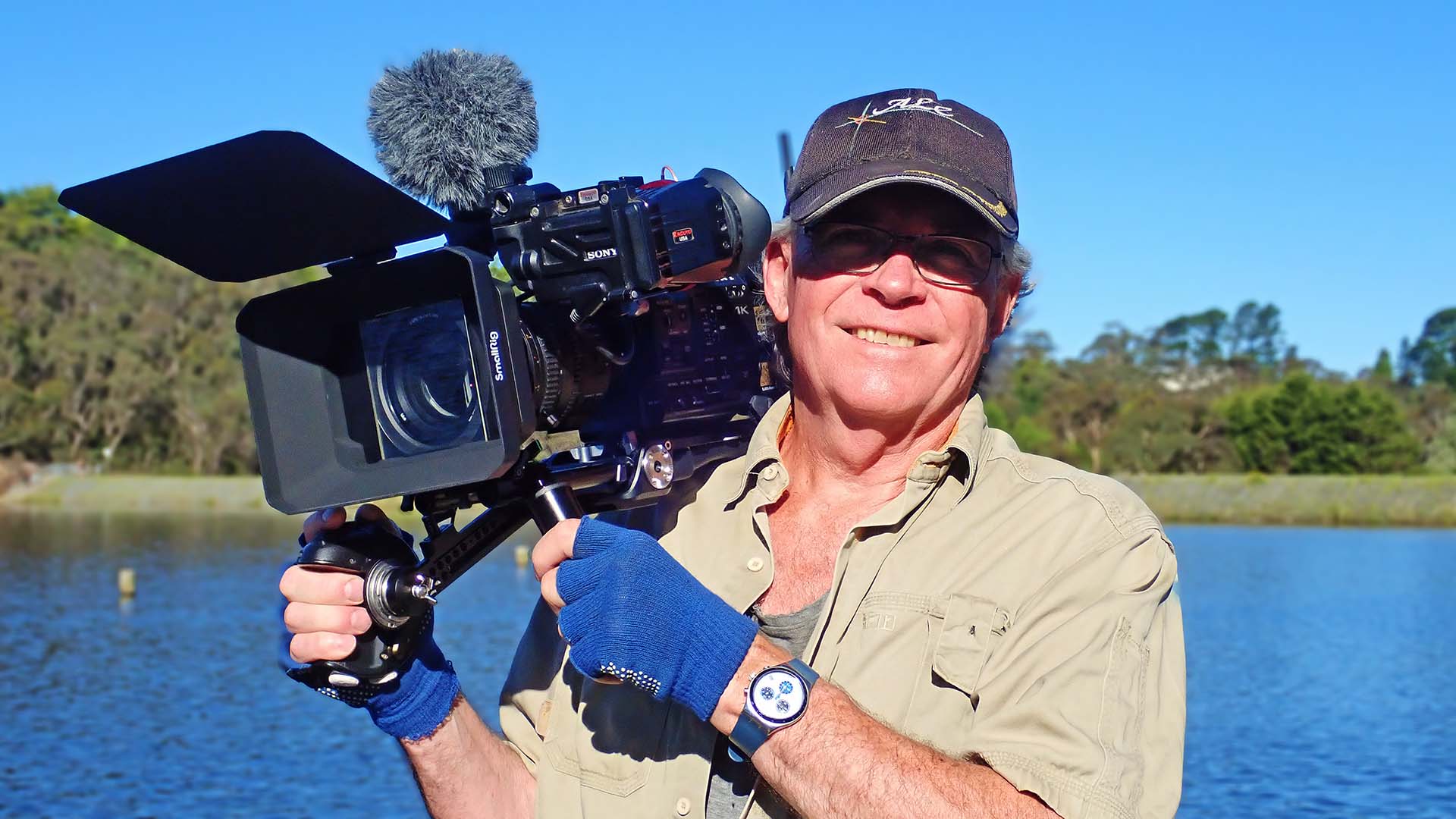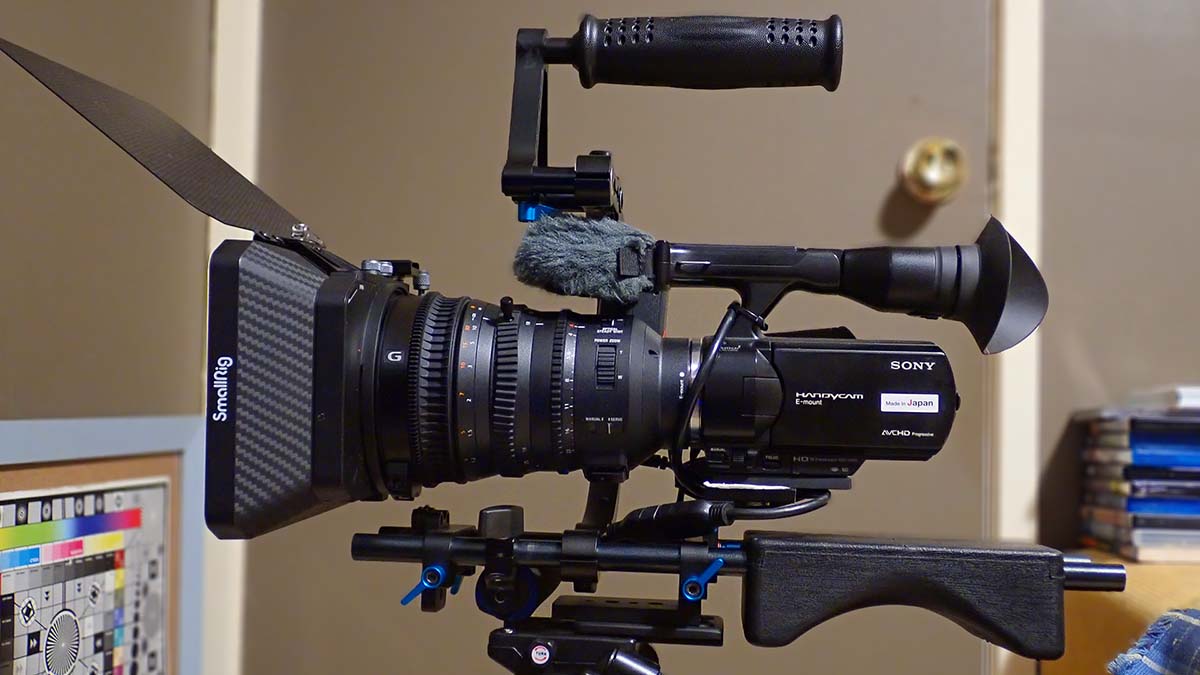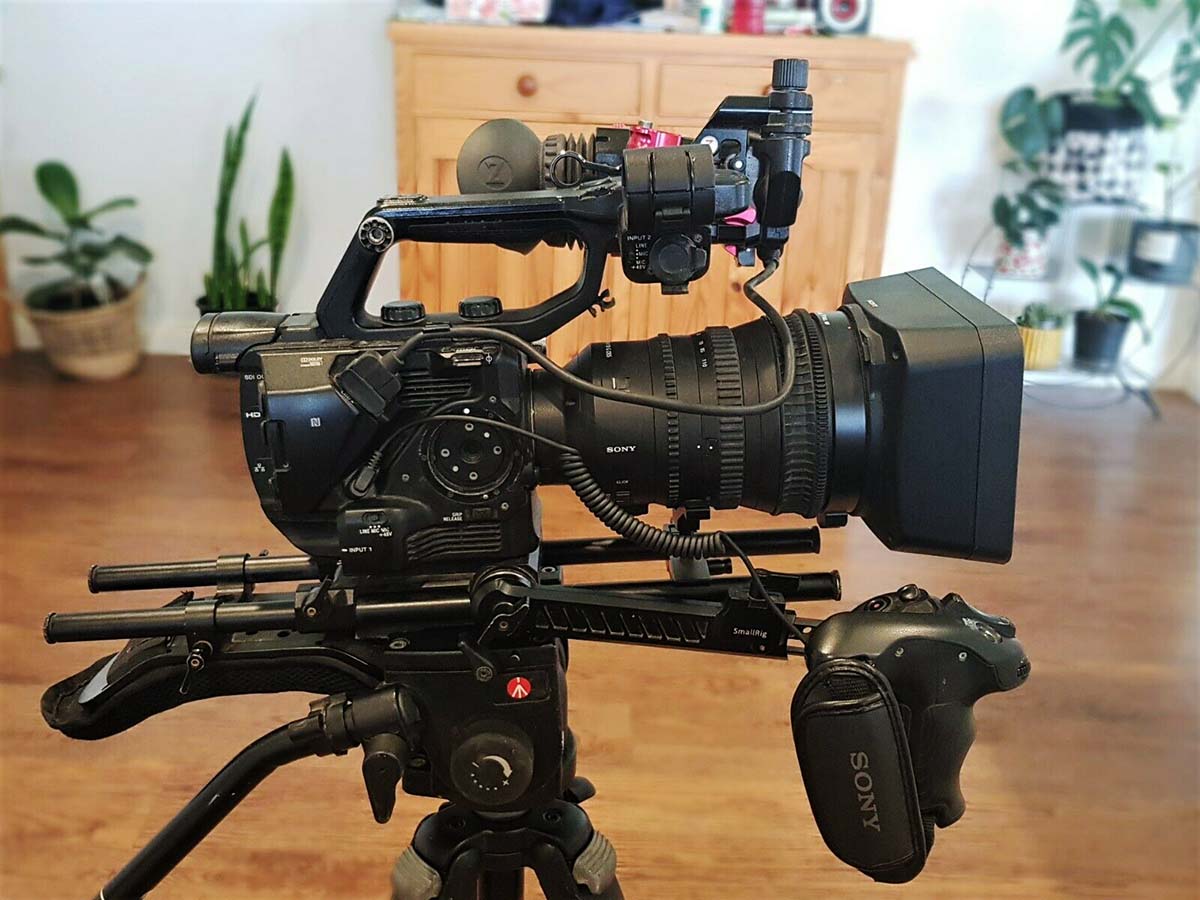
"Did you hear the one about the guy who put a $4,000 lens on his $400 camera?" Well, he's writing this now... Here's how to build a Sony FS5 rig for ENG on a budget.
In the middle of 2020, I took advantage of a 25% sale and picked up a new Sony 18-110mm s35 servo zoom to breathe new life into my aging NEX-VG20. This very under-rated HD video camera travelled with me across Asia for the past 10 years capturing special interest videos for my Youtube Channel. It was one of the first mirrorless E-Mount HD 'hybrid' cameras to offer 14bit RAW stills plus a 'clean' HDMI output to third party recorders so I had successfully mated mine to an Atomos Ninja 'Star' C-Fast recorder plus a bunch of Zeiss 'Contax' full frame zooms & primes by way of a Metabones focal reducer.
This compact HD video setup had proven quite satisfactory but as we are so often reminded in these pages, the documentary world does not stand by whilst you change lenses. As a retired 'ENG' operator, I had always missed the power and performance of my old 1990s vintage Ikegami Betacam SP cameras with their fast, long ratio Canon & Fujinon B4 servo zooms. Consequently, when the 18-110mm zoom became available at that price, it was a no-brainer. As I had only ever used manual lenses on the VG20, circuits which had remained dormant for nearly ten years suddenly burst into life when the big zoom was first mounted. Low and Behold: Auto Iris, Auto Focus, Optical Steady Shot and wonder of wonders: Automatic Face Focus tracking became immediately available, the latter set from the camera's flip-out touch screen.

Sony’s much under-rated NEX-VG20 fitted with the 18-110mm servo zoom and Ninja ‘Star’ HDMI ProRes recorder.
A chance encounter on eBay saw an early model Zacuto EVF 'flip' listed for sale in the US, untested but for a crazy low price. Taking a punt, I bought it for just $75 dollars as my plan was to rig my VG20/18-110mm combo for shoulder mount 'ENG' use with the EVF positioned well forward to allow the camera to rest easily on my shoulder.
Now this is where things took a complete turnaround. Whilst waiting for some extra HDMI cables & rod/rail sets to arrive from overseas, I accidentally tripped over a Sony Fs5 at auction with just five minutes to run. Now, an FS5 would offer several advantages over my aging VG20. Quite apart from the camera's somewhat over-rated 4K capability, Sony's diminutive FS5 boasts 10bit internal HD recording, built-in ND filters, a 14 stop Dynamic Range in S-Log mode, Phantom powered XLR audio inputs and a smooth, proportional servo zoom rocker; the latter being a perfect match for my new 18-110mm zoom and an essential element for the films I like to make.
The FS5 listed at Auction was not without fault and even though it was released back around 2016, it remains today a popular Pro HD camera with on-board 4K capability. Suffice to say there were few bidders, so I was able to secure this 'one owner' camera sans lens but with the latest firmware installed, original box and accessories plus some $1500 worth of additional third-party hardware for just $800. A bargain indeed!
One of the accessories fitted to the seller's FS5 was a beautifully engineered Zacuto optical loupe designed to fit neatly over Sony's supplied LCD screen. As the camera's original OLED EVF had failed, the previous owner had elected to fit the Zacuto optical device rather than have the EVF repaired, maintaining that it was a superior if more expensive solution. Since purchasing the FS5, I have improved & re-located the Zacuto optical mounting points so that the considerable load is taken on a Smallrig cheese-plate accessory bolted to the top of the camera, rather than the FS5's removable and somewhat delicate top-handle.

Sony FS5 with hand-grip on a ‘dog-bone’ rosette arm.
As a long time DaVinci Resolve 'colourist' with a home based 12G SDI 4K setup including calibrated 10bit grading monitor, I was delighted to be ready to shoot, edit and grade in 10bit colour for the first time. As an 'editor' though, I’d become frustrated working with other guy heavily compressed 'acquisition' codecs because I’d always benefited from high bitrate, I-Frame ProRes native files straight from the VG-20's Ninja Star recorder. To this end, I immediately tried to connect the Atomos Star onto to the FS5. The Star is an early ProRes recorder without a monitor which IMO, is unnecessary as a properly set up EVF will give all the Focus, Framing & Exposure information you need if you are confident in your camera’s internal setup.
Unfortunately, the Star recorder is HDMI in/out only. Although I could get the Star to Record trigger automatically via the FS5's Timecode flag, the camera's HDMI output is for 'monitoring only' so Sony have limited it to 8bit 422 colour. This combined with the high cost of C-Fast cards encouraged me to seek an alternative which would capture 10bit colour onto a lower cost recording medium yet keep the camera's weight manageable. After all, one of the huge advantages of the Sony PMW-FS5 is its excellent ergonomics and small, lightweight video form-factor.
In the next part Craig looks at solutions to recording.
Tags: Production Cameras


Comments